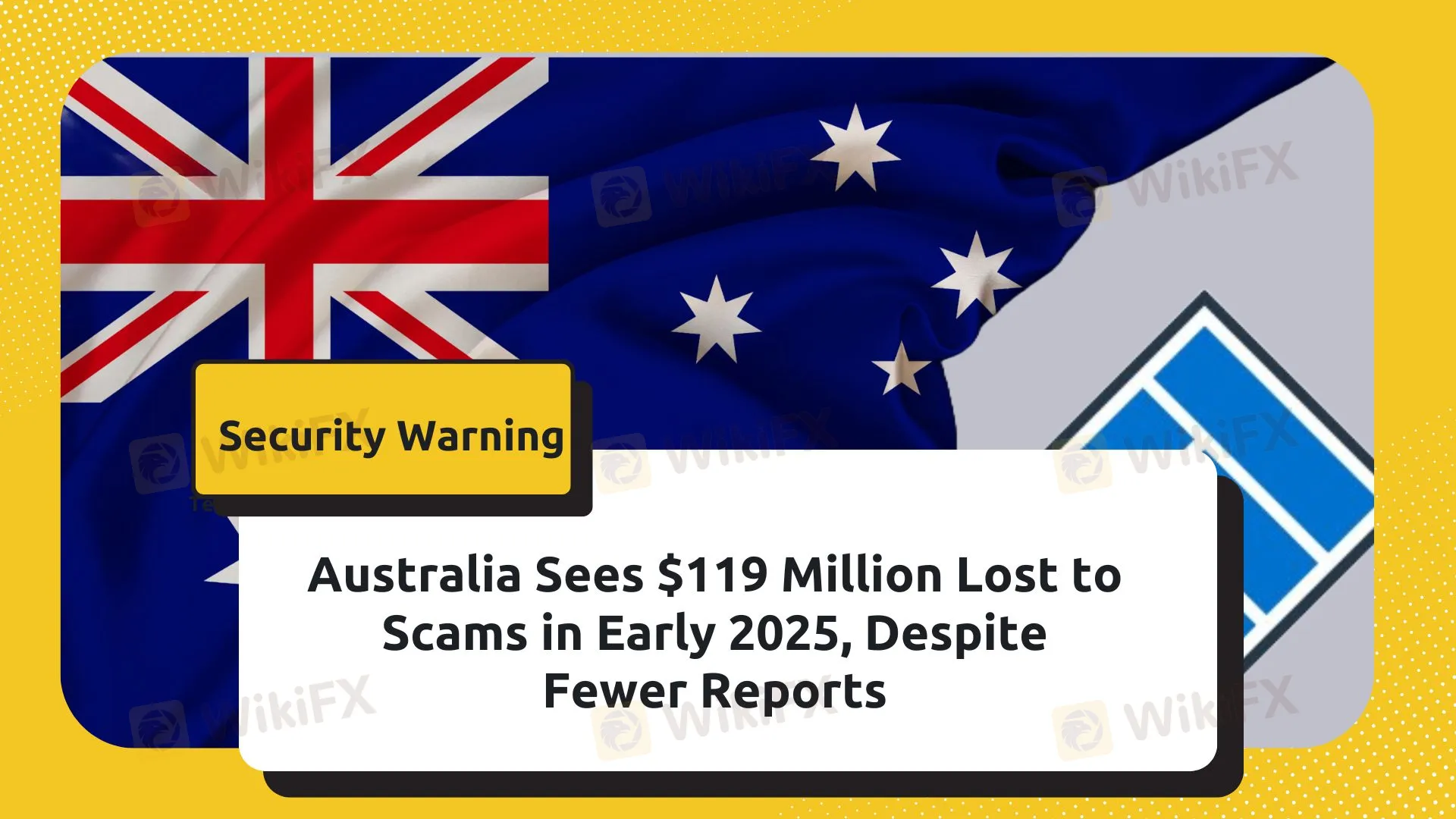简体中文
繁體中文
English
Pусский
日本語
ภาษาไทย
Tiếng Việt
Bahasa Indonesia
Español
हिन्दी
Filippiiniläinen
Français
Deutsch
Português
Türkçe
한국어
العربية
Australia Sees $119 Million Lost to Scams in Early 2025, Despite Fewer Reports
Abstract:Scam-related financial losses in Australia have surged in the first four months of 2025, reaching nearly $119 million, even as the number of reported incidents declined.

The latest data from the National Anti-Scam Centre and Scamwatchsuggests that while Australians are reporting fewer scams, each case is proving more financially damaging.
Investment Scams Still on Top
Investment fraud remains the most financially devastating category, accounting for over $59 million, or more than half of total losses. These scams typically involve false promises of high returns with minimal risk—an approach that continues to lure victims despite growing awareness campaigns.

Although investment scam losses were down slightly by 1.4% compared to the same period last year, the sheer volume of money lost shows that this type of fraud remains a persistent and costly threat.
Phishing and Social Media Scams on the Rise
Phishing attacks—where scammers pose as banks, government agencies, or well-known businesses—have seen a dramatic surge. Reported losses from phishing scams almost tripled, climbing from $4.6 million in early 2024 to $13.7 million in 2025. These scams often begin with deceptive emails or text messages designed to extract sensitive personal information.
Social media has also become a major hunting ground for fraudsters. Reports of scams via platforms like Facebook and Instagram rose by nearly 50%, with total losses in this category reaching $23.4 million. Fraudulent investment ads and impersonation schemes are among the most common tactics used.
Phone Scams Decline, But Damage Persists
Phone scams saw a modest drop in frequency—down 11%—but still caused $25.8 million in losses, making them the most damaging method of contact overall. While this decline suggests growing public caution, phone-based fraud remains a major source of financial harm.
Seniors Hit Hardest
Australians aged 65 and older suffered the most significant losses, totaling $33.1 million. Meanwhile, individuals aged 25 to 44 reported the highest number of incidents, suggesting younger users may be more willing to report while older victims face deeper financial impact.
Despite an overall decline in scam reports, the increase in financial loss per case signals a troubling trend. Scammers are evolving, using more convincing tactics and targeting victims across digital channels.
Disclaimer:
The views in this article only represent the author's personal views, and do not constitute investment advice on this platform. This platform does not guarantee the accuracy, completeness and timeliness of the information in the article, and will not be liable for any loss caused by the use of or reliance on the information in the article.
Read more

SmartFX Exposed: 4 Warning Signs Traders Can’t Ignore
Facing losses due to manipulative forex trading that takes centre stage at SmartFX? Move out of this ship before it sinks and leaves you with virtually no capital on hand. In this article, we will expose SmartFX by showcasing its four red flags that traders like you cannot ignore.

Is India-Based Groww an Investment Scam? 5 Truths to Know
Groww is an India-based broker that is gaining popularity rapidly in the country. You will often see its ads on YouTube and other social media platforms. This broker is promoting itself aggressively. But before you invest with this broker, here are 5 red flags you should know.

Datuk Seri Linked to RM8.4 Million Gold Investment Scam Under Police Probe
Malaysian police are investigating a gold investment scam that has cheated 37 people out of more than RM8.4 million, with a businessman holding the honorific title ‘Datuk Seri’ believed to be the mastermind.

4XC Review 2025: 5 Major Warning Signs You Shouldn’t Ignore
Investment scams are prevalent in the forex market. You need to be Scam alert to protect yourself from these kinds of scams. Otherwise, you could end up penniless, as fraudulent brokers may swindle your money. To stay informed, Read the major warning signs associated with 4XC.
WikiFX Broker
Latest News
Charles Schwab Forex Review 2025: What Traders Should Know
The Global Inflation Outlook
What WikiFX Found When It Looked Into XS
Datuk Seri Linked to RM8.4 Million Gold Investment Scam Under Police Probe
The Psychology Behind the Ascending Triangle Pattern in Forex
Olymptrade Review 2025: Is It Safe or a Risky Bet?
Revealing the Art of Forex Spread Betting
EC Markets Enters Mexico City, Accelerates LATAM Push
Scam Warning from NZ FMA: Beware of Unauthorised Firms
Top CMA-Regulated Forex Brokers in Kenya 2025
Currency Calculator


